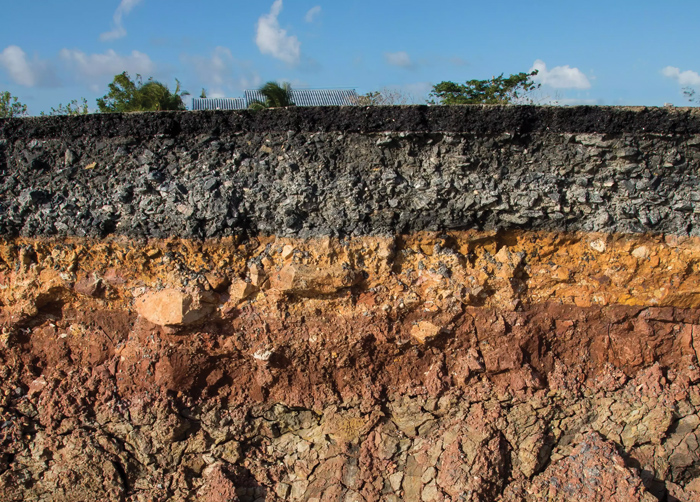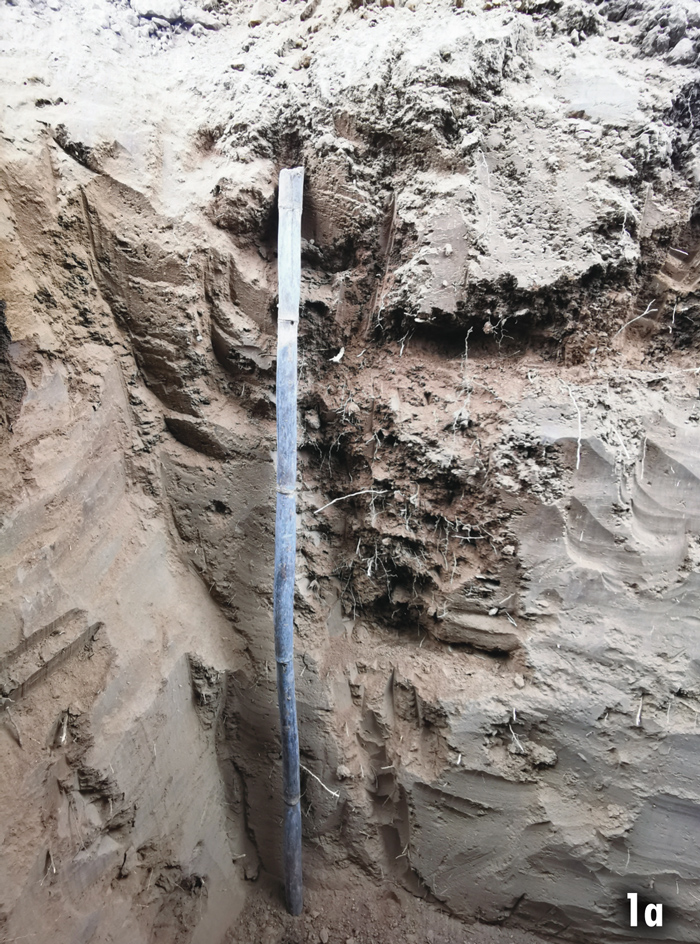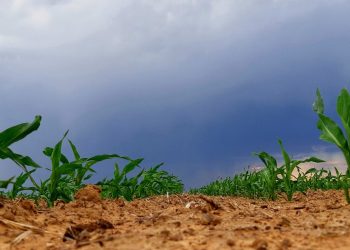
Farming is a business and one valuable management tool is the use of soil profiles to examine the physical soil properties, root development and possible complications on the land. In this article, we investigate the reasons why soil profiles are emerging as an asset for farm management.
As climate conditions continue to change, many producers are forced to transform the way they farm (Mahato, 2014). This is due to continuous changes in agricultural practices, which have now moved to increased efficiency, sustainability and optimal resource utilisation.
Understanding soil profiles
A soil profile can be defined as a vertical cross-section of soil showing the different layers or horizons (Grain SA, 2016). A soil profile pit is dug up to 2 metres deep or until a restrictive layer is found. The soil profile should face the sun so that it can be seen in the best light (Soil Classification Working Group, 2018).
When dug correctly, a soil profile pit can give a comprehensive view of the structure, texture and colour of the soil. During the investigation of a soil profile, certain properties need to be noted, including:
- Effective soil depth: Indicates the depth (in centimetres) to which plant roots can penetrate the soil to readily obtain water and plant nutrients.
- Plant-available water: Water (in millimetres) available to plant roots. It is calculated as the difference between the field capacity and permanent wilting point at each inspection point.
- Soil texture: The texture is determined by an estimation of the clay percentage (sausage method or ribbon method).
- Structure: Soil structure refers to the organisation and arrangement of soil particles and the resultant complex maze of pores (Ghezzehei, 2012). The structure should be categorised into weak, moderate and strong. Breaking of the peds into different structures should also be noted.
- Root distribution: Roots should be inspected to see if they are distributed towards the middle of the row or if they are being restricted.
- Fertiliser placement: It is important to identify this while looking at the profile. If the fertiliser is placed too far from the seed, the roots won’t be able to reach it; whereas when it is placed too close to the seed, there is a risk of fertiliser burn.
Management tools accessed by soil profiles
SOIL HEALTH
An ecosystem exists within the soil and the capacity of soil to sustain this ecosystem is referred to as soil health. Conflict within management systems arises where agricultural productivity is supported, while there is also an attempt to limit the endangerment of other ecosystem services (Williams, 2020).
It is therefore important to not only understand the biological properties contributing to soil health, but also the physical properties (Coyne, 2022). Several physical properties that can be interpreted best by investigating the soil profile, contribute to the soil health. Properties such as the soil texture and structure can give indications on why the biological component may or may not thrive.
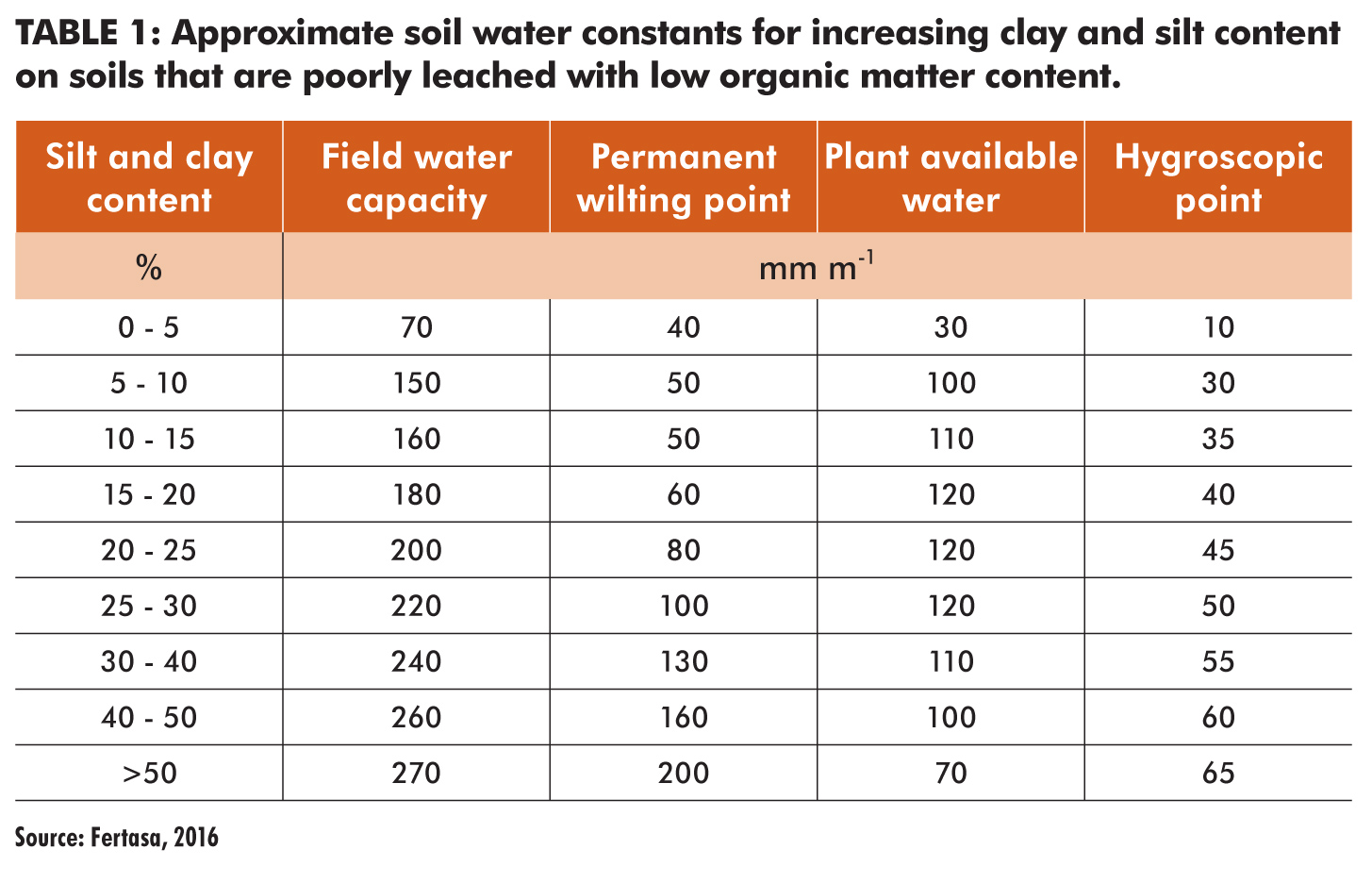 SOIL WATER CONTENT
SOIL WATER CONTENT
Whilst climate change affects everyone, it is the agricultural industry that is most under pressure due to water scarcity (Ingrao, 2023). This makes the management of water resources essential.
Soil profiles aid in understanding the characteristics of the soil’s water-holding capacity and infiltration rate. With this knowledge, producers can reduce wastage and optimise crop yields by implementing targeted irrigation strategies (Mabhaudhi, 2018) and precision farming techniques.
Generally, a fine sandy loam soil will retain 25,4 mm water per 150 mm of depth and a clay soil 25,4 mm per 76 mm of depth. Other soil types will retain moisture levels between these values (Grain SA, 2016). According to the Fertilizer Handbook (Fertasa, 2016), soil moisture for each horizon/layer is estimated and calculated as follows:
SOIL COMPACTION
One of the main reasons a soil profile assessment is performed, is for problem-solving purposes. A soil profile pit is dug as soon as the producer or agronomist finds that the crop is under stress. The most common problem is compaction layers that form below the ground.
Soil compaction occurs when the number and size of the pore space in the soil are reduced (Batey, 2009). The strength properties of the soil and its resistance to root penetration experience a significant increase because of this phenomenon.
Additionally, the permeability of the soil to water and air decreases. Soil compaction is primarily caused by external factors, including the physical pressure from traffic and machinery, as well as internal factors such as low clay and organic matter content, and high soil water content. The only effective method to improve soil compaction is through mechanical deep loosening of the soil.
To limit soil compaction, a tillage system can be implemented where all wheel traffic on the land is restricted to fixed permanent or temporary lanes. This is known as the rail-traffic system.
ROOT DEVELOPMENT
The health of plant roots is directly influenced by the soil they are planted in. By inspecting a soil profile pit, you can best understand what is happening to the roots of your crop beneath the soil.
This gives valuable insight into the planting depth, fertiliser placement and potential issues such as compaction and diseases. It is important to note that root growth is restricted under certain soil-physical conditions.
These include mechanical impedance (measurement of how much a structure resists motion when subjected to a harmonic force), water stress and oxygen deficiency (caused by high clay, compaction and saturated soils). For example, hypoxia could occur if soil is too wet and oxygen deficient (Bengough, 2006).
POTENTIAL CLASSES FOR THE SOIL
Furthermore, it is essential to understand the potential of your fields. A soil profile can help with the rapid identification of the physical properties of the soil. Characteristics such as the texture, structure, effective depth and water-holding capacity can be calculated, and an indication of the potential of the soil can be determined.
Understanding the different potential classes of your farm can help in creating zones that could receive a higher planting density rate and more fertiliser versus an area with a lower potential, where a lower planting rate and less fertiliser should be applied.
EDUCATIONAL TOOL FOR PRODUCERS
Soil profiles are not just management tools but could also serve as educational resources for producers. By including the producer in the study and explaining the different properties observed in the soil profile, an agronomist or soil scientist enables the producer to make informed decisions and to adapt current practices to the changing environmental conditions.
PRACTICAL EXAMPLE
To practically demonstrate this, look at Photo 1, where a soil profile pit was excavated after the producer noticed the trees were starting to flower and shedding fruit. The soil profile was identified as an Augrabies soil form, which consists of an orthic horizon overlying a neocarbonate horizon.
The profile depth was 1,8 metres and the clay content was estimated at below 15%. During the process of distinguishing the different horizons, it was observed that there were very strong compaction layers at 30 cm as well as at 60 cm soil depths.
It was also noted that after eight hours of drip irrigation, only the first 30 cm of soil was wet. Root development and distribution were limited compared to other profiles examined on a different farm with the same soil properties. Additionally, it was noted how the roots grew sideways when it reached the compaction layer. By digging a profile pit, several problems could be identified and rectified.
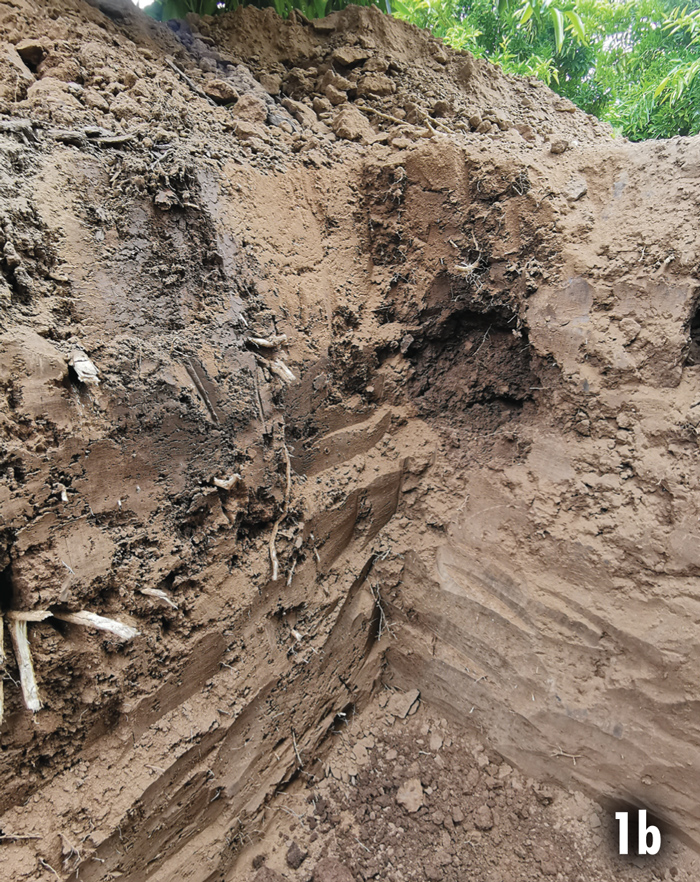
Conclusion
Although digging profile pits and examining them can be time-consuming, their importance cannot be overstated. It is all about understanding what happens beneath the soil surface in order to improve what happens above it. Knowledge is power.
References
- Amsili JV, 2021. Cropping system and soil texture shape soil health outcomes and scoring functions. Soil Security, 1
- Batey T, 2009. Soil compaction and soil management – A review. Soil Sse and Management, 335-345
- Bengough GB, 2006. Root responses to soil-physical conditions; growth dynamics from field to cell. Journal of Experimental Botany, 437447
- Coyne MPY, 2022. Soil health – It’s not all biology. Soil Security, 1 – 3
- Fertasa, 2016. Fertilizer Handbook. Pretoria: Fertasa
- Ghezzehei T, 2012. Soil structure. In B. raton, Properties and Processes (pp. 1 – 17). California: CRC Press
- Grain SA, 2016. Soil profiles and assessing stored moisture capacity. Retrieved from GSA: https://www.grainsa.co.za/soil-profiles-and-assessing-stored-moisture-capacity
- Ingrao CS, 2023. Water scarcity in agriculture: An overview of causes, impacts and approaches for reducing the risks. Heliyon
- Mabhaudhi TM, 2018. Prospects for improving irrigated agriculture in Southern Africa: Linking water, energy and food. Water, 1 – 16
- Mahato A, 2014. Climate change and its impact on agriculture. International Journal of Scientific and Research Publications, 2250 – 3153



